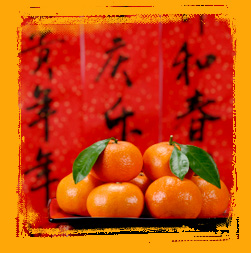
Traditional Foods for the Chinese New Year
The Chinese New Year is the most elaborate and joyful celebration of the Chinese calendar -- and the most indulgent as well. Vast amount of food is prepared not only for family and friends, but also to honor relatives who have died.
For the Chinese, a food may have symbolic significance because of its color, its shape or even the name of that food. Often homonyms -- words that have the same pronunciation but different meanings -- make foods symbolic, especially when the name of the ingredients sounds similar to a wish expressed during the Chinese New Year.
Here is a look at some of the traditional dishes served and enjoyed during the New Year:
Jai
Jai is a vegetarian dish eaten on the first day of the New Year, made up of a root and fibrous vegetables with symbolic meaning. These include:
The lotus seed represents fertility and an abundance of male offspring
Black moss seaweed represents exceptional wealth
Dried bean curd represents wealth and happiness
Fresh bamboo sprouts represents a wish that "everything should be well"
Bok Choy (Pak choy) or Chinese cabbage represents 100 different types of good fortune
Tofu is not included, since it is white, a color that represents death and misfortune. Dried tofu, however, is not white and may therefore be used.
Fish & Foul
A whole fish (with head and tail) or whole chicken (with feet, tail and head) symbolizes abundance and completeness, respectively. The word for fish in Chinese is "yu", which also sounds like the Chinese words for wish and abundance. Fish is customarily served at the end of the New Year's Eve feast, to symbolize the wish for an abundant new year.
Noodles
Long, uncut noodles represent a long life. Superstition even tells that it's bad luck to cut a noodle during the New Year.
Spring Rolls
Spring rolls represent wealth, because of their similar shape to a bar of gold.
Citrus Fruits
Tangerines and oranges are given out to children and served as dessert commonly during the Chinese New Year. The word for tangerine is a homonym for luck, while orange is for wealth. Pomelos, a large grapefruit-like fruit, is also served during the New Year, since the name in Chinese in sounds like the verb "to have".
Sweet Cakes
The most popular dessert served during the Chinese New Year, sweet cakes such as Sticky Rice Cakes have multi-layered symbolism. The sweetness represents a sweet year, while the multiple layers represent rising abundance and the round shape represents family unity and harmony.
setTemplate('chineseny'); print $articles; ?>

